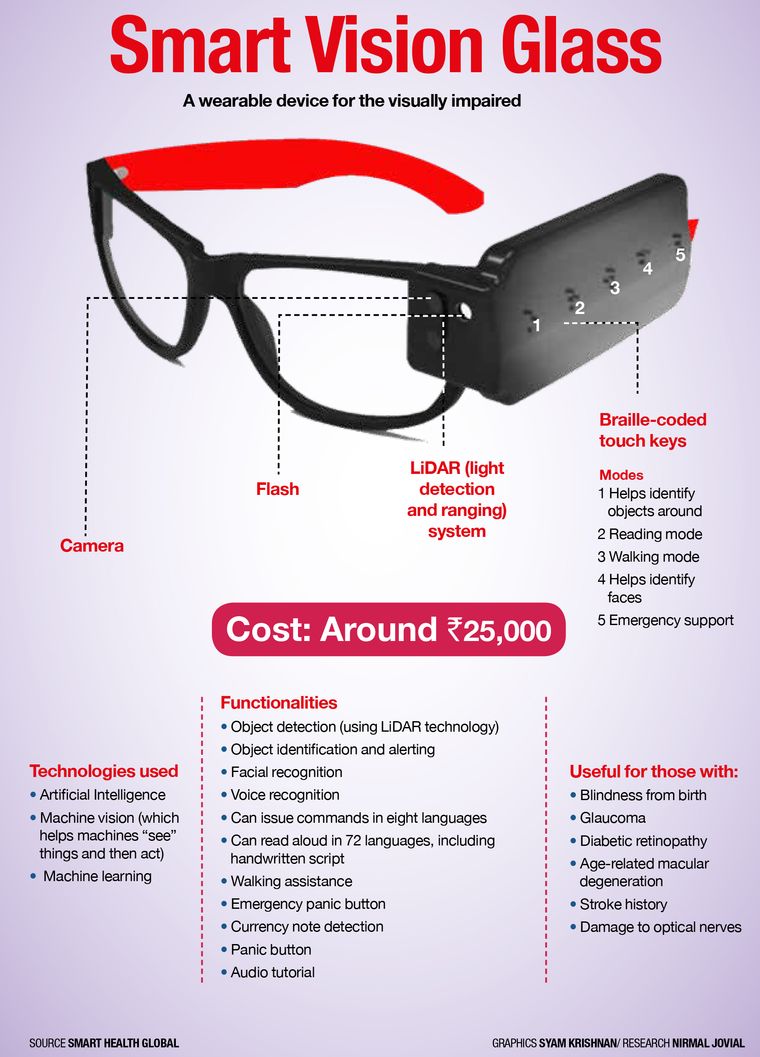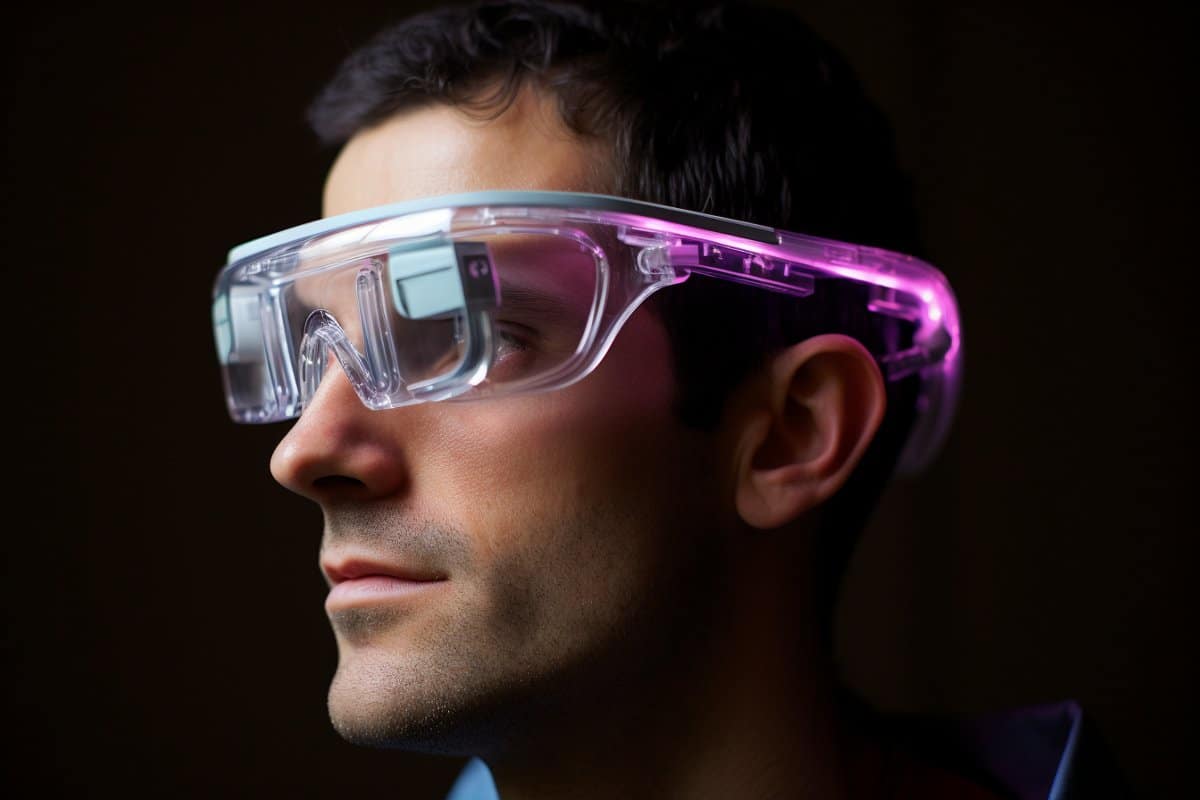The Future of Assistive Technology for the Blind: Empowering Independence
The Future of Assistive Technology for the Blind: Empowering Independence
Blog Article
Enhancing Accessibility Via Assistive Modern Technology for the Blind
The combination of assistive innovation for the blind stands for an essential improvement in access, essentially modifying how individuals browse their environments and involve with society. From screen readers to innovative wise walking canes, these tools not just improve freedom but additionally promote inclusivity in numerous rounds of life. As we discover the diverse types of assistive gadgets and their tangible impacts on daily living, it becomes vital to examine how ongoing technological advancements are improving the landscape of assistance for the blind area. What implications do these growths hold for the future of access?
Overview of Assistive Technology
Assistive innovation describes a range of devices and software developed to boost the capabilities of individuals with impairments, including those who are blind or visually damaged. This technology plays an important duty in advertising self-reliance and boosting the lifestyle for users. By offering alternate approaches for accessing information and performing daily jobs, assistive technology equips people to browse their environments better.
The growth and implementation of assistive innovation accept a range of principles targeted at fostering accessibility. These principles consist of user-centered style, which prioritizes the requirements and choices of the person, and the integration of modern technology into everyday tasks. Such developments ensure that assistive gadgets are not only practical yet also instinctive and simple to use.
Moreover, assistive technology incorporates a varied spectrum of remedies, from low-tech choices like magnifiers to high-tech developments such as screen readers and Braille display screens. The recurring development of this area is driven by the need to attend to the distinct difficulties dealt with by individuals with aesthetic problems (Wearable technology for low vision). As modern technology proceeds to advance, the potential for improving availability and promoting inclusivity continues to be encouraging, inevitably adding to a much more equitable culture

Kinds Of Assistive Gadgets
Various kinds of assistive tools are available to support individuals who are blind or visually damaged, each made to attend to certain needs and obstacles. These gadgets can be extensively classified into three primary kinds: low-tech, mid-tech, and state-of-the-art services.
Low-tech devices include items such as magnifiers, Braille labels, and responsive maps. These are reasonably basic devices that boost the individual's capability to communicate with their environment without needing intricate modern technology.
Mid-tech devices frequently involve more innovative functions, such as electronic magnifiers and portable Braille note-takers. These gadgets can provide capabilities like speech result, enabling customers to gain access to info more efficiently.

Effect on Daily Living
The schedule of different assistive tools substantially improves the lifestyle for individuals who are visually damaged or blind, affecting their day-to-day living in extensive ways. By incorporating modern technologies such as display visitors, Braille shows, and audio description services into their routines, users acquire greater autonomy and freedom. These devices promote accessibility to information, making it possible for individuals to perform day-to-day jobs, such as reading e-mails, navigating public areas, and delighting in media content.
In addition, assistive gadgets encourage individuals to involve even more totally in social interactions and neighborhood tasks. The ability to utilize smartphones outfitted with access attributes allows for seamless communication and link with others. This connectivity cultivates see here a feeling of belonging and decreases sensations of seclusion.
In professional setups, assistive technology sustains productivity by permitting people to full work jobs successfully. Devices eye doctor career path like voice acknowledgment software program and specialized magnification tools allow individuals to take part in the workforce on equivalent footing with their sighted peers.

Innovations in Modern Technology
Current technical improvements have considerably transformed the landscape of devices available for individuals who are blind or aesthetically damaged. The combination of expert system (AI) and artificial intelligence has provided surge to applications that improve navigating and things recognition. As an example, smart device applications can currently utilize AI to determine and explain environments in real-time, supplying customers with beneficial contextual info.
In addition, developments in haptic innovation have actually resulted in the development of clever canes equipped with sensors that identify barriers and offer responsive comments. This equips customers to navigate their environment with enhanced self-confidence and freedom. Innovations in text-to-speech software and braille display screens have actually boosted the access of digital web content, allowing for smooth communication with various media.
Wearable modern technologies, such as smart glasses, are likewise making strides in assisting aesthetic disability. These tools can offer enhanced fact experiences, superimposing critical details onto the user's field of view. Collectively, these advancements not just enhance the high quality of life for people who are blind however also promote greater incorporation in society. As modern technology remains to advance, the capacity for much more transformative devices continues to be imminent.
Future Trends and Innovations
As modern technology rapidly progresses, the future of assistive devices for people that are blind holds enormous promise. Developments in expert system (AI) and artificial intelligence are poised to transform the way blind customers connect with their atmospheres. AI-driven applications are being established to enhance things acknowledgment, enabling customers to identify and browse their surroundings with higher ease and precision.
Furthermore, innovations in haptic comments technology are allowing the production of tactile maps and navigating aids that supply real-time information through touch. These advancements not only improve movement yet also foster freedom. Additionally, wearable gadgets equipped with enhanced truth (AR) attributes are arising, offering users aesthetic details through sound descriptions, thereby linking the gap between the physical and digital worlds.
In addition, the combination of wise home technology presents brand-new opportunities for access, allowing individuals to control their living settings with voice commands or smartphone applications. As collaboration between tech developers and the blind community proceeds, the concentrate on user-centered style will certainly ensure that future innovations are customized to meet the one-of-a-kind browse around this site requirements of this population (Wearable technology for low vision). The trajectory of assistive modern technology assures a much more empowering and inclusive future for people that are blind
Final Thought
In verdict, assistive technology plays a crucial role in enhancing availability for people with visual disabilities. Constant developments in modern technology and user-centered design make sure that these tools cater effectively to the special requirements of the blind neighborhood.
The assimilation of assistive innovation for the blind stands for a crucial development in availability, fundamentally modifying exactly how people browse their environments and engage with society.Assistive innovation refers to a range of devices and software designed to boost the abilities of individuals with specials needs, including those that are aesthetically impaired or blind. Wearable technology for low vision.As technology swiftly progresses, the future of assistive tools for individuals who are blind holds immense assurance. The trajectory of assistive modern technology guarantees a more empowering and comprehensive future for people that are blind
In verdict, assistive modern technology plays an essential duty in enhancing access for people with visual problems.
Report this page